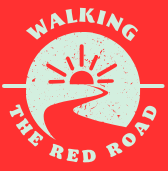What Must It Take?
A hybrid poem/article By Mitchell Ryan Distin, PhD
How many more wildfires must it take—
skies choked black, horizons bleeding red—
before we see the matchstick in our hands?
Forests scream in tongues of flame,
and we call it seasonal change,
as if the Earth’s fever is a passing cold.
How many children must fall in classrooms,
silent under the hum of fluorescent lights,
before we question the machines we’ve built—
the cold metal laws, the twisted freedoms
that let bullets speak louder than books?
How many more summers must melt into ash,
heatwaves rising like walls around the poor,
while oceans swallow cities whole
and rivers forget how to flow?
Parched mouths crack in drought,
and still we pour poison into the ground.
What must it take for us to listen
to hurricanes pounding at the doors,
their howls louder each year,
to understand that the sky is warning us?
That the winds are not angry—just tired.
How many more species must vanish
before we feel the weight of absence?
Before we notice the silence
where birds once sang,
where bees once whispered between blooms?
Our Mother is sick—
her breath shallow, her skin scorched,
her veins clogged with plastic and waste.
And we, her children, cough in the smoke,
wonder why the air tastes of metal and sorrow.
We were not meant to live like this—
walled in by concrete,
fed by machines,
afraid of the sun,
afraid of each other.
What must it take to remember
the ballad of rain on leaves,
the scent of wind wafting through pines,
the simple truth that we belong to the Earth,
not the other way around?
Will it take the last tree falling
without a hand left to hear it?
The last child crying in a nameless storm?
The last breath, shared between man and beast,
too thin to hold us both?
How many more signs must be carved
into the sky, the sea, the soil,
before we break apart—
before we scream into the smoke,
Enough!
before we claw at the walls we’ve built,
ripping down the lies brick by brick,
and beg the Earth for one last chance?
Will it take our own children
digging graves in cracked earth,
their small hands blistered and bleeding,
asking why we let it all burn?
How many more times must the world end
before we are brave enough to begin again?
For 95-99% of our evolutionary history, humans lived differently than we do today. We were gatherers of wild plants, hunters of wild game, and members of connected communities where survival hinged on cooperation and shared responsibility (see for more: “The Evolved Nest”). Our ancestors rose with the sun and slept beneath an unpolluted sky. They moved, worked, and rested according to the patterns of the Earth. Life was not without hardship, this much is certain, but it was aligned—with our bodies, our minds, our spirits, and the ecosystems we called home. We belonged to the world; the world didn’t belong to us.
Today, we are unrecognizable from that lineage. We inhabit cities of steel and glass, suffocated by noise and lights that never dim. We sit more than we move, scroll more than we speak, consume more than we create. Our food is packaged and processed, our relationships fragmented by distance and digital walls. Our children drill for mass shootings in schools that should protect them. Wildfires, hurricanes, and droughts grow stronger and more frequent. We watch, paralyzed, as headlines blur into static.
We live in a world of abundance and scarcity—overflowing with information yet starved for wisdom, surrounded by people at the touch of a button yet lonelier than ever. Chronic diseases, anxiety, depression, and ecological destruction rise in tandem, symptoms of a world profoundly out of sync with the one we evolved to thrive in.
The planet, too, bears our scars—its forests burn, its oceans rise, and its skies grow heavy with heat. With each passing day, the Gaia hypothesis, which suggests that Earth functions as a self-regulating organism, feels increasingly viable, as the Earth’s systems struggle to restore balance against our relentless disruptions.
But change is not impossible. The same evolutionary drive that helped our ancestors adapt and survive can be reignited and remembered—if we choose to listen. Indigenous communities have long understood the delicate balance between people and planet. Their traditions teach us that human health cannot be separated from the health of the Earth. Science, too, now tells us what they have always known: connection heals, Nature restores, and shared purpose gives life meaning.
So what must it take? Will we wait to prove the Native American proverb true: “When the last tree has been cut down, the last fish caught, the last river poisoned, only then will we realize that one cannot eat money”? Or will our species rise to the occasion and act now, before we realize that our stomachs never evolved to consume arbitrary paper.
We must rebuild what we’ve lost. Reweave community with empathy and shared responsibility. Reconnect with the land as kin, not a resource to be used or exploited. Slow down. Consume less. Value presence over possession. We need policies rooted in sustainability and justice, and education that nurtures curiosity, compassion, and collaboration—not competition.
The Earth is screaming, and our bodies are echoing the pain. But within this unraveling lies a chance—to remember who we are of the Homo genus and to become something better than ever before. Adaptation is our legacy. But this time, adaptation means listening to the past and choosing wisdom over wealth, care over consumption, and connection over conquest.
The door hasn’t fully closed yet, but it’s nearly shut. What must it take for us to act—not tomorrow, not next year, not next election cycle, but now?

